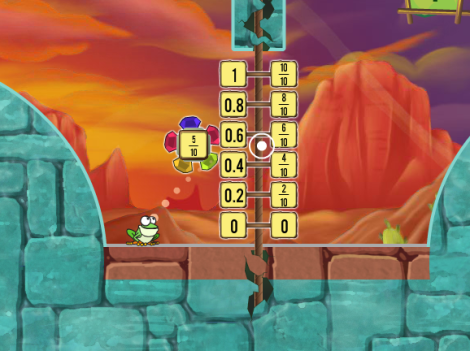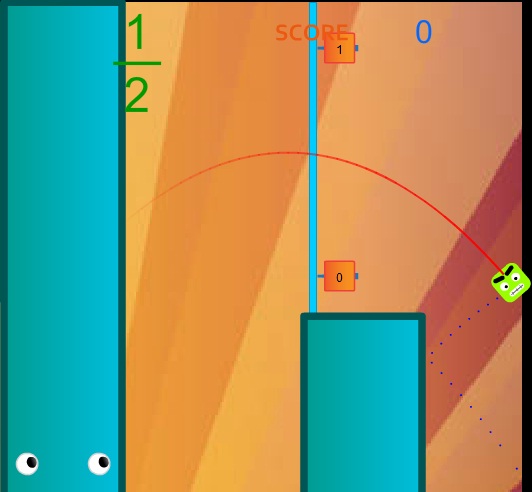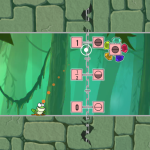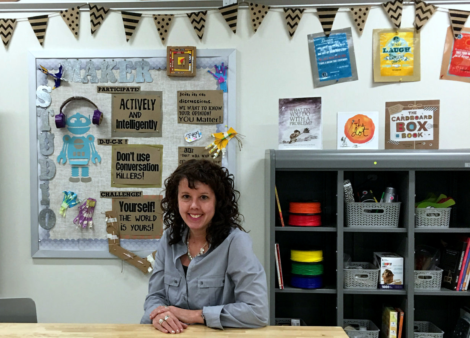
New Game on GameUp: Center for Game Science presents “Treefrog Treasure”
Posted by Andrew Gardner on
The Center for Game Science (CGS) is part of the department of computer science at the University of Washington. We’re made up of a group of designers, software engineers, artists, and students, including both PhD students and undergraduates in technical and educational fields. We have six games currently in development, and all of them targeted at different aspects of supporting measured and assessed learning through games.
The Making of Treefrog Treasure:
Our latest game is Treefrog Treasure. The game was designed to teach players how to place fractions on a numberline. The core group working on the game from the beginning included only 7-8 people, so we were really all involved in coming up with game design ideas. This means ideas were coming not only from game designers, but also artists, developers, and researchers in both Computer Science and Education. We went through a number of prototypes that were able to address our math goals but weren’t engaging enough for players. These prototypes included pinball-like games where players bounce/shoot a ball onto a numberline. Finally, we realized that a platformer game (think Super Mario Bros.™) where the character could stick to walls and jump into numberlines was the most engaging prototype and we agreed that a frog would be a natural choice for that character. We add various gameplay mechanics over the course of the game to keep players interested from a pure gaming standpoint, including: bouncy surfaces, slippery surfaces, dangerous lava, portals, and more.
One of our main teaching goals was to provide scaffolding to aid players that are struggling by giving them more and more help if they are unable to solve a given numberline problem. On a simple numberline with two endpoints and a fractional target, the player has the opportunity to collect 5 gems by jumping into the correct point on the first try. If the player misses their first try, the line is divided into the appropriate denominator and they are able to collect 3 gems. If they continue to miss, additional labels are provided and eventually the target fraction is displayed on the line to show the answer. This design lets any player complete a level without requiring math reasoning, but quickly players realize that the most effective way to beat the game is to use their knowledge of fractions to get the answer right on the first try.

Early Prototype
Overview of CGS Research:
Our research at CGS is focused around creating the best learning experience for students and providing the best support for teachers. One current project looks at how we can make Treefrog Treasure dynamically adapt the progression of numberline concepts based on each student’s performance in the game. Here, the game looks at how the student did on past levels, and selects the next challenge so that it will maximize both learning and engagement. The goal is to dynamically create a personalized progression for every student.
Another current project involves the development of a support tool for teachers called the Teacher Portal. This tool provides a web interface where teachers can see detailed information about the progress of their students in the game. If a teacher assigns a set of levels in Treefrog Treasure to her class, she can immediately assess performance across a variety of concepts through this Teacher Portal. We are working with teachers to refine our design and make this an effective tool to support the use of our games in the classroom.

More Information:
To learn more about our games and research, check out our website at centerforgamescience.org. Head over to BrainPOP’s GameUp to play our Treefrog Treasure and another one of our fraction games, Refraction!















